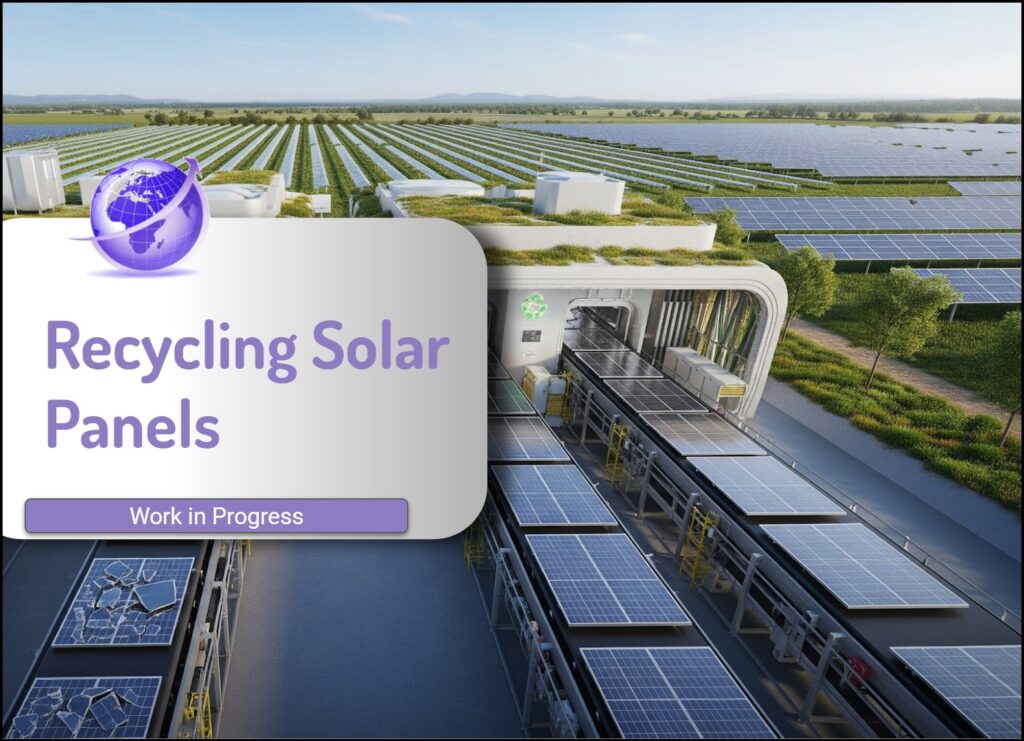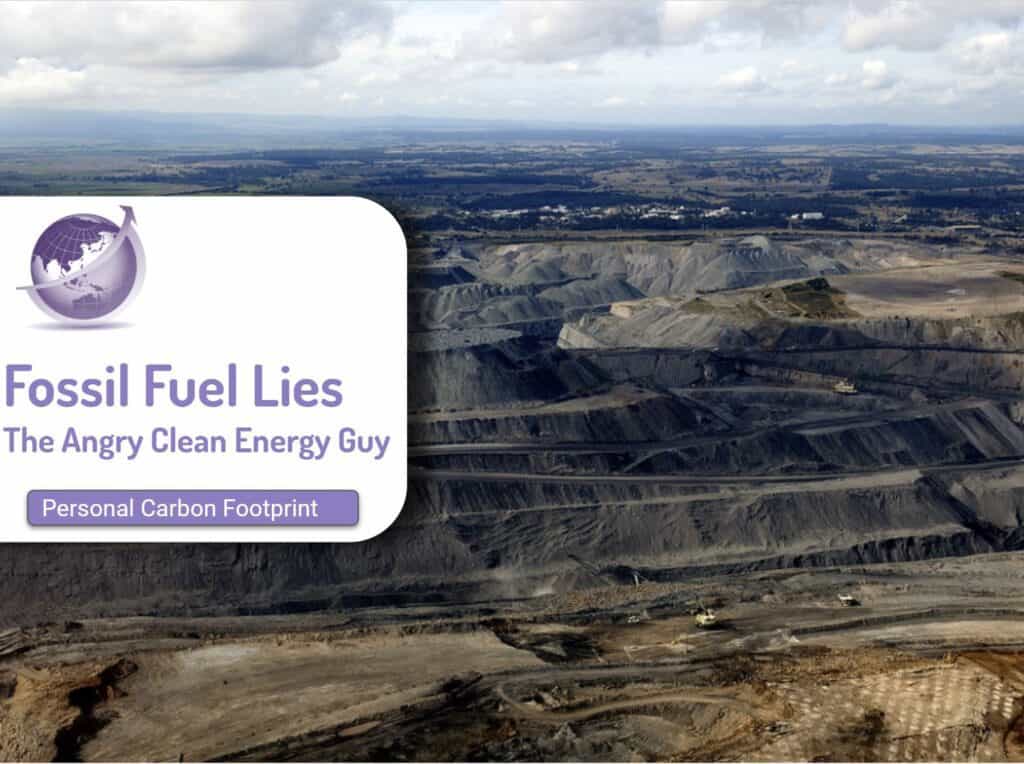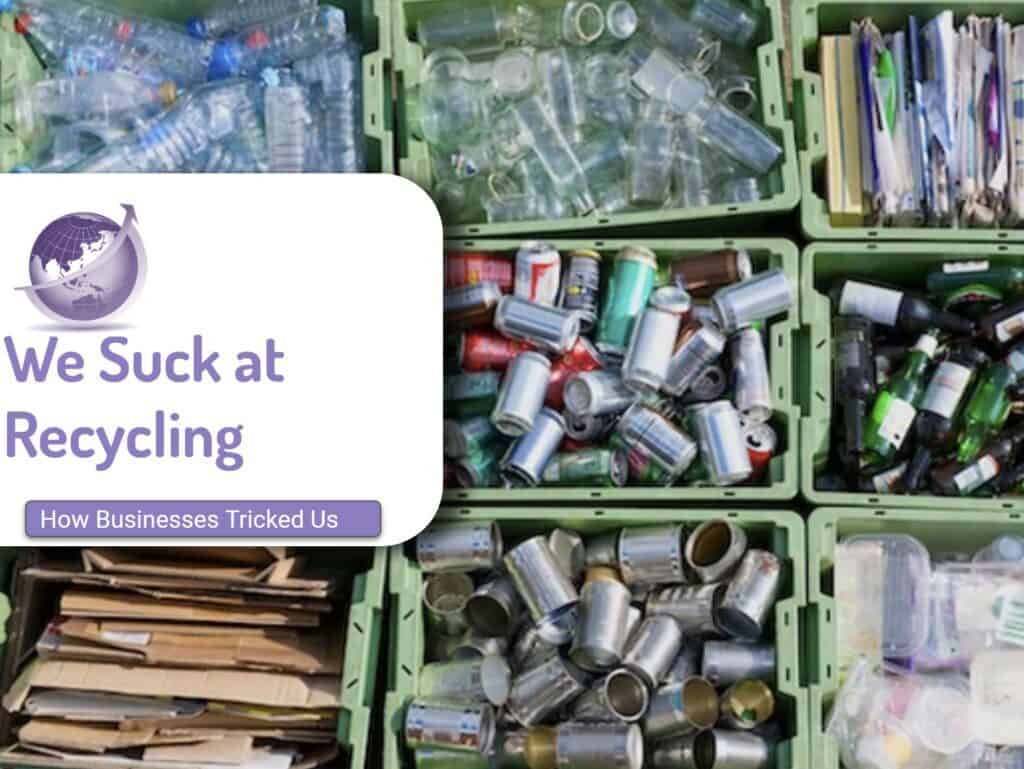Recycling solar panels detailed assessment shows most recognise that a fully circular process is needed to avoid waste. Pilot programs and existing processes can be scaled up and fears of a waste wave are not valid.
1. Current Status of Solar Panel Recycling
Predominant Methods
Solar panel recycling primarily involves mechanical, thermal, and chemical processes, often combined to recover valuable materials like glass, aluminum, silicon, silver, and copper from crystalline silicon photovoltaic (PV) panels, which dominate the market (90-97% of global PV installations).
- Mechanical Recycling: Most common due to simplicity and scalability. Involves dismantling panels, shredding, crushing, and milling to separate materials. Glass (70-75% of panel weight) and aluminum frames are recovered, but silicon and metals like silver are often lost or incinerated.
- Thermal Recycling: Uses high temperatures to burn off polymer encapsulants (e.g., EVA) to access silicon and metals. Effective for glass and metal recovery but energy-intensive and can produce emissions.
- Chemical Recycling: Uses solvents or acids (e.g., nitric acid or proprietary leaching agents) to dissolve encapsulants or extract metals. Achieves higher purity but is costly and generates chemical waste.
Global Recycling Percentage
Exact global recycling rates are poorly documented due to inconsistent data and regional policies. Estimates suggest:
- U.S.: ~10% of solar panels recycled.
- EU: Higher rates due to the Waste Electrical and Electronic Equipment (WEEE) Directive, but many facilities recover only bulk materials (glass and aluminum, ~80% of panel mass), incinerating valuable components like silicon and silver.
- Globally: Likely <20% recycling rate, with most end-of-life (EOL) panels landfilled due to economic and logistical barriers.
2. Economic and Logistical Challenges Preventing Large-Scale Implementation
Economic Challenges
- High Recycling Costs vs. Low Landfill Costs: Recycling a silicon PV module costs $15–$45 in the U.S., compared to $1–$5 for landfill disposal.
- Low Value of Recovered Materials: Glass (75% of panel weight) has low market value (cents per panel). Silver (0.1% of mass, 47% of reclaimed value) and silicon require costly processes for high-purity recovery.
- Lack of Economies of Scale: Few large-scale facilities exist, and high initial investments deter adoption.
- Material Composition Variability: Diverse panel designs (e.g., crystalline silicon vs. thin-film) require tailored processes, increasing costs.
Logistical Challenges
- Decentralized Collection: Panels are installed across diverse locations, complicating collection without standardized systems.
- Regulatory Inconsistencies: Outside the EU, few regions mandate PV recycling. The U.S. lacks federal mandates, with varying state policies.
- Volume and Timing: Low EOL waste volumes currently (due to 25–30-year panel lifespan) discourage infrastructure investment, but a “tsunami” is expected by 2030 (8 million metric tons) and 2050 (60–80 million tons).
- Technical Limitations: Struggles to separate bonded materials (e.g., glass from EVA) reduce recovery rates, especially for high-purity silicon.
3. Recent Research and Technological Advances in Material Recovery
Recent research focuses on improving efficiency, cost-effectiveness, and environmental impact for recovering silicon, silver, and glass:
- Mechanical-Hybrid Techniques: Photorama consortium aims for >98% material recovery at 98% purity using automated disassembly and chemical leaching.
- Chemical Delamination: Helmholtz Institute developed a base-activated persulfate and ammonia solution to recover >90% of silver in 10 minutes, reducing costs and environmental impact.
- Electrochemical Processes: University of New South Wales developed a lab-scale process using solar cells as electrodes to recover 95% of silver at 99.9% purity in minutes.
- Thermal and Ultrasound Methods: 9-Tech (Italy) uses combustion and ultrasound to recover 90% of materials (silicon, silver, copper, glass) without toxic chemicals.
- AI and Robotics: AI-driven sorting and robotic disassembly improve precision and reduce labor costs.
- Silicon Purification: Icarus project explores silicon purification to 6N–11N purity for reuse in new panels, reducing energy-intensive mining.
4. Specific Projects, Companies, and Collaborative Initiatives
Projects and Companies
- Veolia (France): Operates a PV recycling facility since 2018, focusing on bulk materials and low-grade silicon. ReProSolar project aims for full silicon and silver recovery.
- ROSI Solar (France): Opened ROSI Alpes in 2023, using proprietary processes to recover high-purity silver, silicon, and copper.
- SolarCycle (USA): Recovers aluminum, glass, and metals in Texas, charging $18 per panel vs. $1–$5 for landfilling.
- 9-Tech (Italy): Pilot-scale non-toxic process in Venice recovers 90% of materials.
- Reiling (Germany): Achieved 2024 breakthroughs in high-quality glass and silicon recovery.
- TG Companies (USA): Develops selective leaching and electrowinning to recover >99% of silver.
Collaborative Initiatives
- PV Cycle (EU): Establishes collection networks under WEEE Directive.
- Photorama Consortium: Develops advanced recycling technologies, including robotics and chemical leaching.
- SEIA (USA): Voluntary solar module recycling program since 2016.
- U.S. Department of Energy (DOE): Funds recycling research (e.g., $1.3 million to University of Kansas in 2023).
- International Energy Agency (IEA): Guides global PV recycling strategies.
5. Potential Future Impacts on Sustainability and Circular Economy
Sustainability Impacts
- Reduced Environmental Footprint: Recovering >90% of materials minimizes landfill waste and heavy metal leakage. Reusing silicon could cut PV production’s carbon footprint by 50%.
- Resource Conservation: Recovering silver and silicon reduces mining. Materials could be worth $450 million by 2030 and $15 billion by 2050.
- Regulatory Compliance: Innovations align with tightening regulations, reducing compliance costs.
Circular Economy Objectives
- Closed-Loop Systems: High-purity recovery enables material reuse in new panels.
- Economic Viability: Automation and efficient processes could make recycling competitive with landfilling.
- Industry Growth: Recycling market projected to reach $548 million by 2030 (CAGR 7.4%) and $2.49 billion by 2032 (CAGR 31.75%).
- Design Innovation: Advances may drive panel redesigns for easier disassembly.
Challenges to Impact Realisation
- Scaling pilot technologies requires significant investment.
- Volatile material prices (e.g., silicon price doubled 2020–2021) could undermine viability.
- Social factors (e.g., consumer awareness) need addressing.
6. Key Statistics, Reports, and Data from Credible Sources
- Global PV Waste Projections:
- 2030: ~8 million metric tons.
- 2050: 60–80 million tons, led by China (13.5 million tons), U.S., Germany, Japan.
- Material Composition:
- Glass: 70–75% of panel weight, low value.
- Silver: <1% of mass, 47% of reclaimed value.
- Silicon, copper, aluminum: Two-thirds of monetary value.
- Economic Value:
- Recovered materials: $450 million by 2030, $15 billion by 2050.
- Recycling market: $322.9 million in 2024, $548 million by 2030 (CAGR 7.4%), $2.49 billion by 2032 (CAGR 31.75%).
- Recycling Costs:
- U.S.: $15–$45 per silicon PV module vs. $1–$5 for landfill.
- SolarCycle: $18 per panel; hazardous waste landfilling ~$5.
- Recycling Rates:
- U.S.: ~10%.
- EU: Higher but varies; focuses on bulk materials (~80% of mass).
References
National Renewable Energy Laboratory (NREL):
- Solar Photovoltaic Module Recycling: A Survey of U.S. Policies and Initiatives (2021): Provides data on recycling costs, material composition, and U.S. recycling status.
Link: https://docs.nrel.gov/pdf/Solar-Photovoltaic-Module-Recycling-A-Survey-of-U.S.-Policies-and-Initiatives.pdf - Environmental and Circular Economy Implications of Solar Energy (Solar Futures Study): Discusses recycling challenges and material recovery for PV sustainability.
Link: https://docs.nrel.gov/pdf/Environmental-and-Circular-Economy-Implications-of-Solar-Energy.pdf - NREL Publications Database: Contains additional technical reports and journal articles on PV recycling (search for “solar recycling” or “PV end-of-life”).
Link: https://www.nrel.gov/research/publications.html
International Renewable Energy Agency (IRENA):
- End-of-Life Management: Solar Photovoltaic Panels (2016): Estimates material value, waste volumes, and global recycling challenges.
Link: https://www.irena.org/publications/2016/Jun/End-of-life-management-Solar-Photovoltaic-Panels - Renewable Energy and Jobs – Annual Review 2023: Includes data on recycling market growth and job creation potential.
Link: https://www.irena.org/Publications/2023/Sep/Renewable-energy-and-jobs-Annual-review-2023
U.S. Environmental Protection Agency (EPA):
- Photovoltaic Module Recycling and Disposal: Overview of U.S. recycling processes and regulatory gaps.
Link: https://www.epa.gov/hw/solar-panel-recycling - Wastes – Hazardous Waste – Universal Waste: Solar Panels: Details on handling PV panels as hazardous waste and recycling options.
Link: https://www.epa.gov/hw/universal-waste#solar
EU WEEE Directive:
- Directive 2012/19/EU on Waste Electrical and Electronic Equipment (WEEE): Outlines EU mandates for PV recycling, influencing global standards.
Link: https://eur-lex.europa.eu/legal-content/EN/TXT/?uri=CELEX:32012L0019 - European Commission – WEEE Compliance for PV Panels: Practical guidance on PV recycling requirements.
Link: https://ec.europa.eu/environment/topics/waste-and-recycling/waste-electrical-and-electronic-equipment-weee_en
ScienceDirect:
- A Review of Recycling Processes for Photovoltaic Modules (2018): Comprehensive review of mechanical, thermal, and chemical recycling technologies.
Link: https://www.sciencedirect.com/science/article/pii/S0921344918300993 - Advances in Solar Panel Recycling: Challenges and Opportunities (2023): Discusses innovations in material recovery and economic barriers.
Link: https://www.sciencedirect.com/science/article/pii/S2213138823001234
Nature Energy:
- Social and Environmental Challenges of Solar Photovoltaic Recycling (2022): Analyzes social factors and recycling efficacy.
Link: https://www.nature.com/articles/s41560-022-01032-5 - Circular Economy for Solar Energy: End-of-Life Management (2021): Explores circular economy principles for PV systems.
Link: https://www.nature.com/articles/s41560-021-00849-2
MarketsandMarkets:
- Solar Panel Recycling Market – Global Forecast to 2030: Projects market size ($548 million by 2030, CAGR 7.4%).
Link: https://www.marketsandmarkets.com/Market-Reports/solar-panel-recycling-market-208237908.html
Fortune Business Insights:
- Solar Panel Recycling Market Size, Share & Industry Analysis, 2024–2032: Forecasts market growth to $2.49 billion by 2032 (CAGR 31.75%).
Link: https://www.fortunebusinessinsights.com/solar-panel-recycling-market-109212









